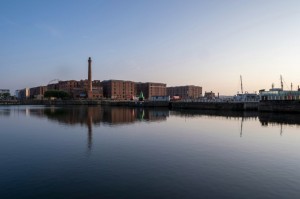Did you know there are over 1,200 UNESCO World Heritage sites around the world? They are vital for celebrating human history and the natural world around us. However, there is also a need to carefully manage them. Sometimes new developments are necessary. The key thing here is to balance preservation and innovation, allowing new builds or upgrades but also protecting the heritage. As top architects in London, we want to have a closer look at how to do this.
Losing heritage
 Sadly, three sites have actually lost their World Heritage status over the years.
Sadly, three sites have actually lost their World Heritage status over the years.
The first was the Arabian Oryx Sanctuary, now the Wildlife Reserve in Al Wusta, Oman. It became a UNESCO site in 1994, but was delisted in 2007 because the size was reduced to dig for oil and the number of oryx had declined massively.
The second site to lose its status was the Elbe Valley in Dresden, Germany. It got its listing in 2004. However, just two years later it was in danger of losing the listing because of plans to build a huge four lane bridge. The UNESCO status was gone in 2009.
Finally, Liverpool Maritime Mercantile City got UNSECO status in 2004. However, there have been contemporary developments in several areas. As a result, the listing was said to be at risk in 2012. Approval of more plans, notably the creation of a new stadium for Everton FC at Bramley-Moore Dock, saw the loss of the status in 2021.
A better way
All three projects to lose UNESCO status have an important thing in common; there were new developments, or plans for them, that had an affect on the heritage of the sites. If you are planning a project that could have an impact on the heritage of a building or area, we can help. In fact, we are among the best architects in London.
Many other UNESCO sites have had changes without compromising the heritage. In fact, some of them actually enhance it. A careful balance of preservation and innovation can allow this.
A notable example is Chateau Barde-Haut Winery in Saint-Emilion, France. The area has a stunning landscape and long history of wine making. The winery allows modern production methods but has amazing traditional architecture with a minimal design that integrates into the landscape. It has impressive sustainable features too, such as a green roof with vegetation.
Another noteworthy example is Klaksvik Row Club in the Faroe Islands. There is an incredible history in the area of boatbuilding and rowing. In fact, the traditional techniques to handcraft the boats date back to the age of the Vikings. Rowing is still the national sport too. The rowing club building was an important part of the urban regeneration. However, it supports the traditions in the area and blends perfectly with the landscape.
Finally we have the Primary School in Balaguina, Mali. The historic Bandiagara Escarpment region has some incredible landscapes and has had UNESCO status since 1989. There are big challenges here though because of a lack of infrastructure. The Primary School is a great example of how to create new buildings by respecting local materials, craftsmanship, and building styles. It blends with the setting, preserving the culture and heritage but allowing modern uses.
Talk to leading architects in London
Coffey Architects appreciates the importance of celebrating and preserving our heritage. However, it should not mean we can’t build anything new. The solution is to carefully balance preservation and innovation. That can produce the most impressive results.
If you have a project in mind and would like some help, speak to us. We are award winning architects in London, but can take on projects all around the world. This can even include working on historic buildings and in heritage areas.
